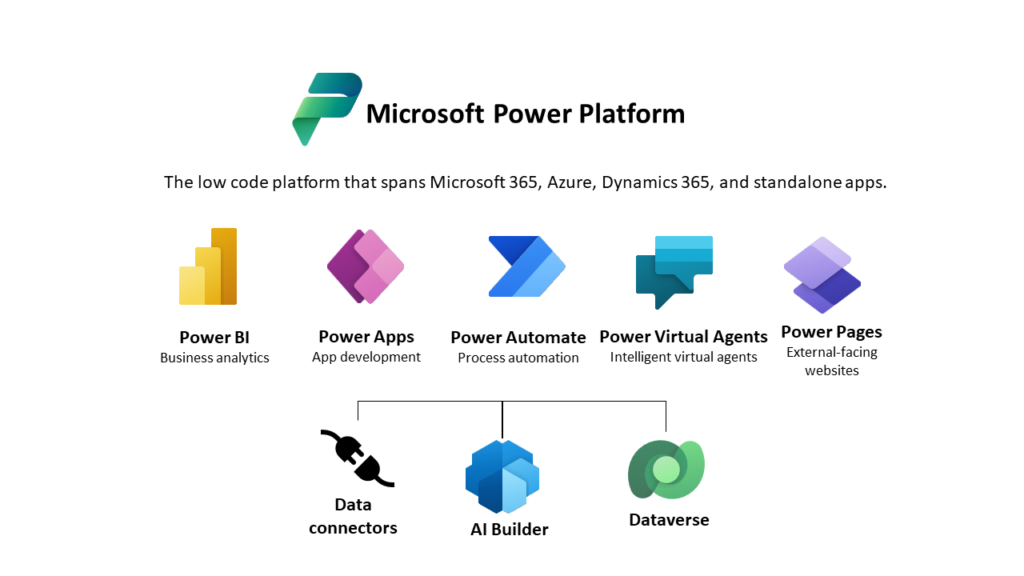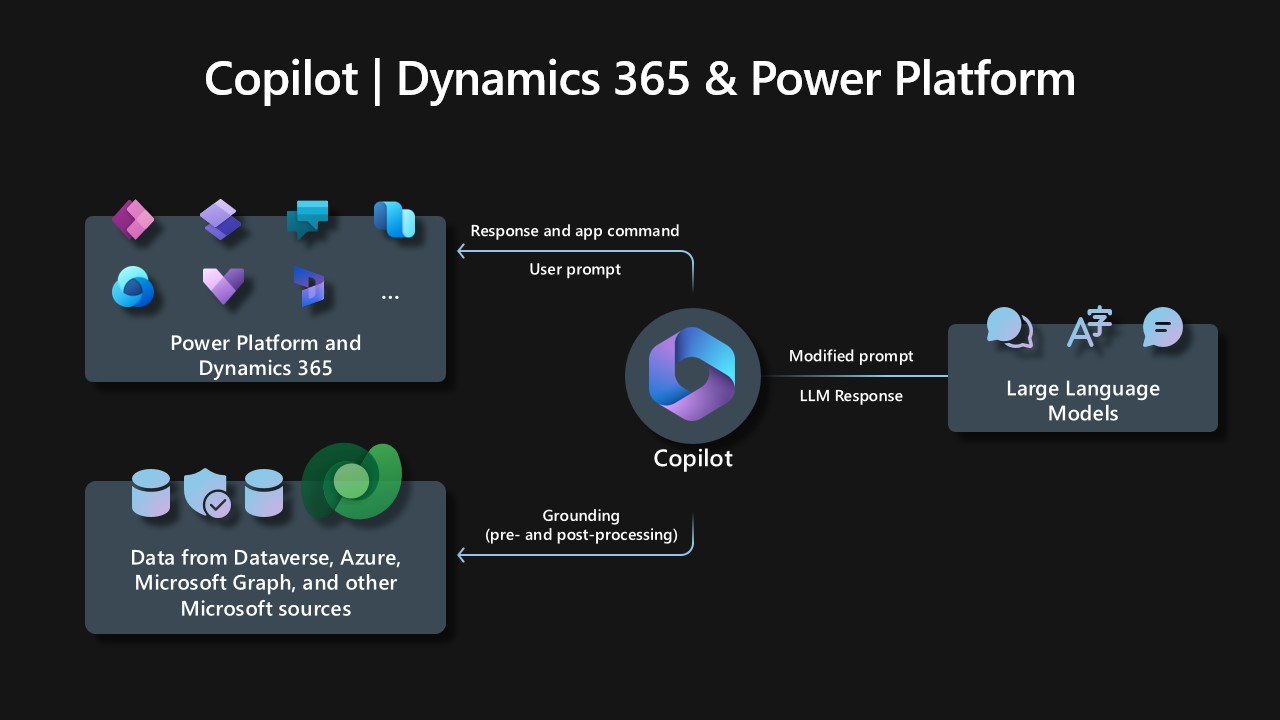In today’s business landscape, efficiency reigns supreme. Companies are constantly seeking ways to streamline processes, optimize workflows, and empower employees to achieve more. Here’s where the powerful combination of Microsoft Dynamics 365 and Power Platform comes into play.
This dynamic duo offers a comprehensive solution for businesses of all sizes. Dynamics 365 serves as a robust business application suite, managing crucial areas like customer relationship management (CRM), enterprise resource planning (ERP), and marketing automation.
Power Platform, on the other hand, is a low-code development platform that empowers users to create custom applications, automate tasks, and gain valuable insights from data.
By integrating these two platforms, businesses unlock a treasure trove of efficiency-boosting benefits. Let’s delve into the strategies that maximize the potential of this powerful union.
Streamlining Business Processes: Eradicate Manual Work
Manual data entry, repetitive tasks, and siloed information are efficiency killers. Integrating Dynamics 365 and Power Platform allows you to automate these mundane activities, freeing up valuable employee time for strategic thinking and higher-value tasks.
Here’s how:
- Power Automate: This component within Power Platform automates workflows across Dynamics 365 applications. Imagine automatically generating invoices upon order confirmation in your CRM or triggering an approval process for purchase requests within your ERP system. Power Automate eliminates manual steps and ensures data consistency across applications.
- Custom Workflows: Power Apps allows you to build custom applications tailored to your specific needs. Need a mobile app for sales reps to capture leads on the go? Or an internal communication platform that integrates seamlessly with Dynamics 365 data? Power Apps makes it possible, streamlining workflows and boosting productivity.

Empowering Employees: Citizen Developers Take Center Stage
Traditionally, application development required specialized coding skills. Power Platform shatters this barrier with its low-code approach. With minimal coding knowledge, business users (citizen developers) can create custom applications that address their specific needs.
Imagine a marketing team building a campaign management app within Power Apps to track marketing initiatives directly linked to Dynamics 365 customer data. Or a service team creating a custom app to manage customer support tickets and track service history directly within Dynamics 365 for CRM. This empowers employees to solve problems and optimize their work without relying solely on IT resources.
Unifying Data and Insights: A Single Source of Truth
Data silos are another major roadblock to efficiency. Organizations often struggle to access and analyze data from disparate systems. Dynamics 365 acts as a central repository for business data, providing a unified view of your customers, operations, and finances. Power Platform then empowers you to leverage this data effectively.
- Power BI: This business intelligence tool allows users to create interactive dashboards and reports that combine data from Dynamics 365 and other sources. Sales teams can gain real-time insights into customer behavior and sales performance. Operations teams can analyze production data and identify bottlenecks. Data-driven decision-making becomes a reality.
Building a Culture of Efficiency: Considerations for Successful Integration
While the potential for efficiency gains is significant, successful integration requires careful planning and execution. Here are some key considerations:
- Clearly Define Goals: Before embarking on the integration journey, clearly define your objectives. What specific processes do you want to streamline? What data insights do you seek? Having a clear vision ensures the integration aligns with your overall business goals.
- Data Governance Strategy: Integrating Dynamics 365 and Power Platform involves large amounts of data. Establish a data governance strategy to ensure data quality, security, and compliance with regulations.
- Change Management: Integrating new tools can impact user behavior. A robust change management plan is crucial to facilitate user adoption and ensure employees understand the benefits of the integrated system.
- Training and Support: Empower your employees by providing comprehensive training on Dynamics 365 and Power Platform functionalities. Offer ongoing support to ensure users leverage the platforms effectively.
Real-World Examples: Efficiency in Action
The power of Dynamics 365 and Power Platform integration is evident across diverse industries. Here are some real-world examples:
- A manufacturing company automated purchase order approvals within their Dynamics 365 ERP system using Power Automate, leading to a significant reduction in processing time.
- A retail chain developed a custom Power App for their sales associates to capture customer feedback on the sales floor. This data integrated seamlessly with their Dynamics 365 CRM system, enabling them to personalize customer experiences and boost sales.
- A healthcare provider leveraged Power BI to gain insights from patient data in Dynamics 365, allowing them to improve care delivery and identify at-risk patients proactively.
Conclusion: Efficiency Unleashed
The synergy between Microsoft Dynamics 365 and Power Platform presents a golden opportunity to unlock efficiency across your organization. By automating mundane tasks, empowering employees with low-code development tools, and fostering data-driven decision-making, this powerful combination streamlines processes, boosts productivity, and ultimately positions your business for success.
Ready to embark on your journey towards maximized efficiency? Here are some next steps:
- Assess your current business processes: Identify areas where manual work, data silos, and repetitive tasks hinder efficiency.
- Evaluate your data landscape: Understand where your data resides and how it can be leveraged for better insights.
- Explore Dynamics 365 and Power Platform functionalities: Microsoft offers a wealth of resources, documentation, and training materials to help you understand the capabilities of each platform.
- Consider a proof-of-concept project: Start small by identifying a specific process or department where integration can add significant value. Implementing a successful proof-of-concept can build momentum and demonstrate the benefits of large-scale integration.
- Partner with a Microsoft Dynamics 365 and Power Platform expert: Consulting with a qualified partner can provide invaluable guidance and ensure a smooth and successful integration process.
By embracing this dynamic duo, you’ll transform your business into an efficiency powerhouse, empowering your employees, optimizing workflows, and ultimately achieving a competitive edge.
The future of business thrives on efficiency. Start your journey today!
External Resources:
- Microsoft Power Platform Consulting
- Power Platform Integration: Bridging the Gap Between IT and Business Users
- Use cases of Microsoft Power Platform
- Utilize Microsoft’s suite of no-code/low-code tools
- Microsoft Power Platform Consulting services – Power BI and Power Automate
- Microsoft Power Platform for Finance Industry
- Power Platform Integration & development support
- Microsoft Power Platform consulting for manufacturing industries


